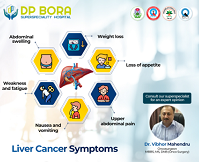Navigating Critical Care in Cancer Emergencies
- Get link
- X
- Other Apps
A Guide to Understanding and Managing
Introduction:
Emergencies
are an unfortunate reality for individuals battling cancer. Whether it's due to
treatment complications, disease progression, or unforeseen medical events, the
need for critical care can arise suddenly and unexpectedly. In such
situations, prompt and effective intervention is essential to ensuring the best
possible outcomes. In this blog, we'll delve into the complexities of critical
care in cancer emergencies, exploring the challenges, strategies, and resources
available to healthcare professionals and patients alike.
Understanding Critical Care in Cancer Emergencies
Cancer
emergencies encompass a wide range of acute medical conditions that require
immediate attention and intervention. These emergencies can arise as a result
of the cancer itself, complications from treatment, or unrelated medical
issues. Common examples include severe infections, pulmonary embolism, spinal
cord compression, and tumour-related complications such as bleeding or
obstruction.
One of the
key challenges in managing cancer emergencies is the complex interplay between
the underlying disease and its treatment. Chemotherapy, radiation therapy, and
surgery can weaken the immune system, increase the risk of infection, and cause
organ dysfunction, making patients more vulnerable to complications.
Additionally, certain cancers, such as leukaemia or lymphoma, can directly
affect the bone marrow or blood cells, leading to hematologic emergencies such
as neutropenic fever or thrombocytopenia.
Strategies for Managing Cancer Emergencies
Effective
management of cancer emergencies requires a multidisciplinary approach
involving oncologists, emergency physicians, critical care specialists,
and supportive care teams. Early recognition, rapid assessment, and appropriate
intervention are paramount to optimising outcomes and minimising morbidity and
mortality.
Key
strategies for managing cancer emergencies include the following:
- Prompt Recognition: Healthcare providers must be
vigilant for signs and symptoms of cancer emergencies, including fever,
unexplained pain, neurologic deficits, and respiratory distress. Timely
recognition allows for early intervention and prevents delays in
treatment.
- Comprehensive Assessment: A thorough evaluation is
essential to determine the underlying cause of the emergency and assess
the patient's overall condition. This may involve laboratory tests,
imaging studies, and consultations with specialists to guide management
decisions.
- Supportive Care: Symptom management and
supportive care play a crucial role in alleviating distress and improving
quality of life for patients experiencing cancer emergencies. This may
include pain control, hydration, nutritional support, and psychological
interventions to address anxiety and distress.
- Targeted Therapy: Depending on the nature of
the emergency, specific interventions may be required to address the
underlying cause. This may involve antibiotics for infections, blood
transfusions for hematologic emergencies, or surgical intervention for
tumour-related complications.
- Palliative Care: In cases where curative
treatment is not feasible or appropriate, palliative care focuses on
relieving symptoms, enhancing comfort, and supporting patients and their
families through the end-of-life journey.
Resources for Cancer
Emergency Management
In recent
years, there has been a growing recognition of the need for specialised
resources and expertise in managing cancer emergencies. Cancer centres and
comprehensive care facilities often have dedicated teams and protocols in place
to address these challenges effectively. Additionally, online resources,
guidelines, and educational materials are available to healthcare providers and
patients to enhance awareness and facilitate optimal care.
One such
resource is The DP Bora Superspeciality Hospital, a leading healthcare platform
that offers comprehensive information and support for individuals facing cancer
emergencies. Through its online portal, patients and caregivers can access
educational articles, expert advice, and community forums to navigate the
complexities of critical care for cancer. Furthermore, DP Bora
Superspeciality Hospital provides a directory of specialised healthcare
providers and treatment centres, enabling patients to connect with the
resources they need to receive timely and appropriate care.
Conclusion:
In
conclusion, navigating critical care in a cancer emergency requires a
coordinated and multidisciplinary approach, with a focus on early recognition,
comprehensive assessment, and targeted intervention. By understanding the challenges
and strategies involved, healthcare providers and patients can work together to
optimise outcomes and improve quality of life. And with resources like DP
Bora Superspeciality Hospital available to support and guide them,
individuals facing cancer emergencies can find the information and assistance
they need to navigate this challenging journey with confidence and resilience.
- Get link
- X
- Other Apps

Comments
Post a Comment